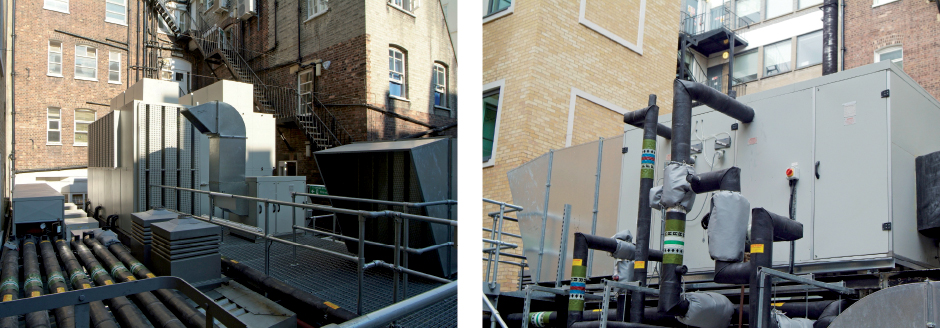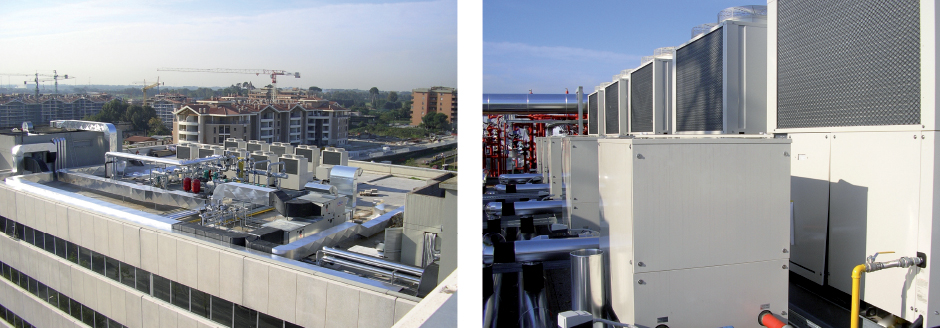ECO G Water Heat Exchanger For hydronic applications
Application Examples

When all available electrical power needed to be utilised for the IT equipment for a leading international bank, the cooling load of over 450 kW needed to be powered by gas. The outdoor units were connected via Water heat exchangers to cooling coils inside the ‘close control’ units thereby maintaining a conditioned environment for temperature and humidity. By utilising the hot water function over 100 kW of hot water are supplied to the building and therefore the additional benefit of considerable CO2 savings is ensured.

B: Feed
C: Return
D: Input Electricity Nat. Gas
E: 65 mm CHW F&R
F: 150 mm Header
H: Cooling Load Room A
I: Cooling Load Room B
J: Air Cooled Chiller
K: Package Auto Fill Unit
L: 100 Litre pressure vessel
Specifications subject to change without notice. Rating Conditions: Cooling Indoor 27 ºC DB 19 ºC WB Outdoor 35 ºC DB 24 ºC WB Heating Indoor 20 ºC DB Outdoor 7 ºC DB 6 ºC WB.
When a top London restaurant opened it needed large volumes of fresh air to ensure the optimum dining environment. GHP units connected to the cooling coils within the air handling equipment ensured the air was introduced in the right condition in both summer and winter.

When some old chillers needed replacing at the end of their operational lifetime, GHPs with Water heat exchangers enabled the project to be carried out in stages whilst still utilising the existing water pipe work and fan coils. This enabled the project to be delivered on time, to a restricted budget and avoided all issues regarding refrigerant in confined spaces.
























